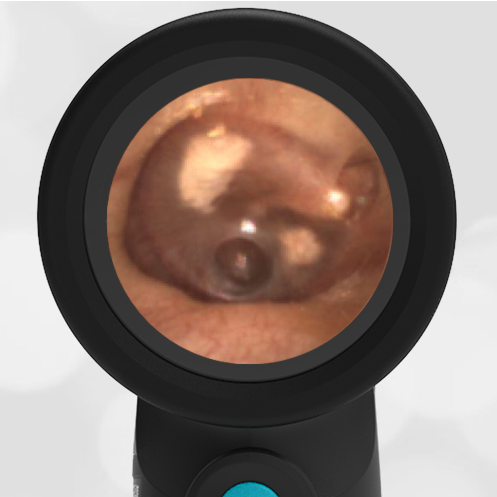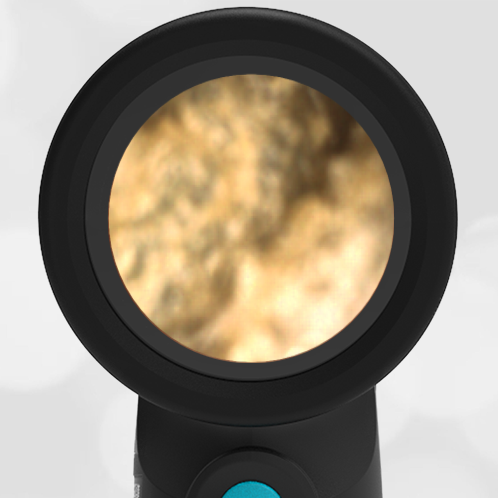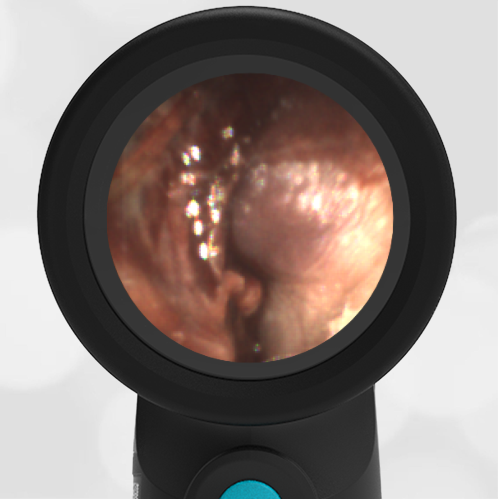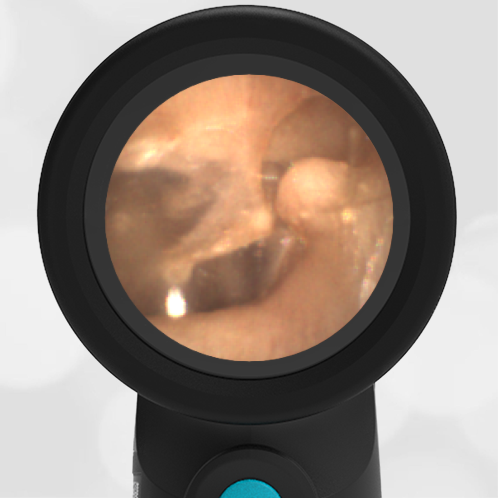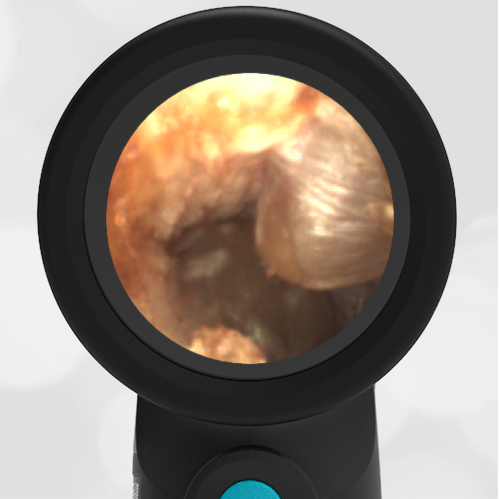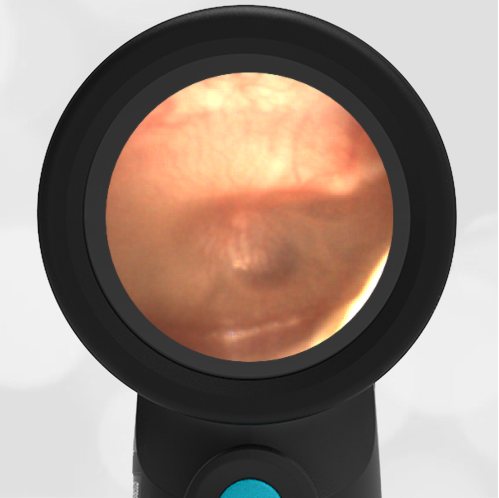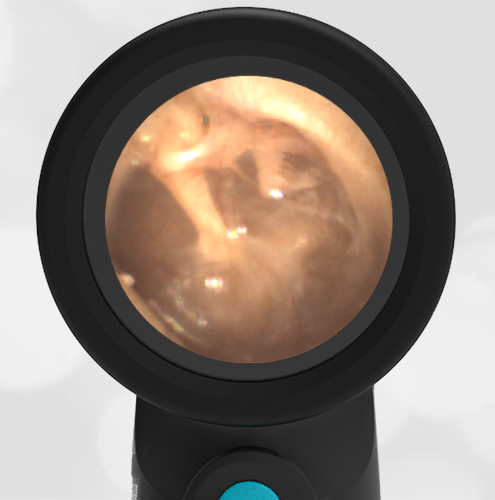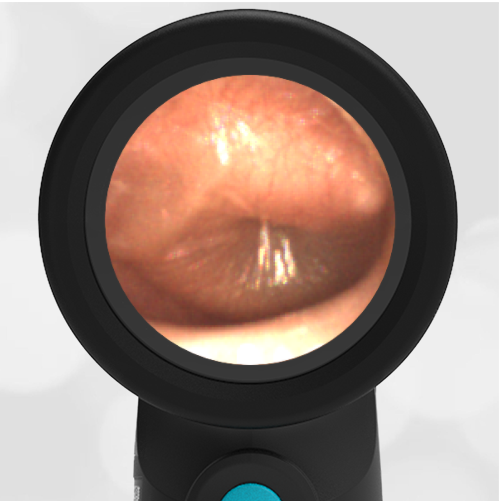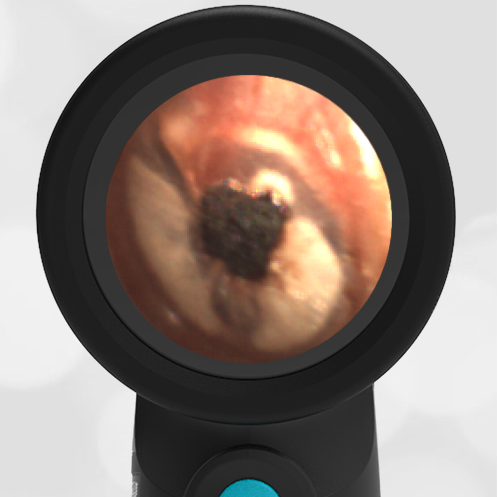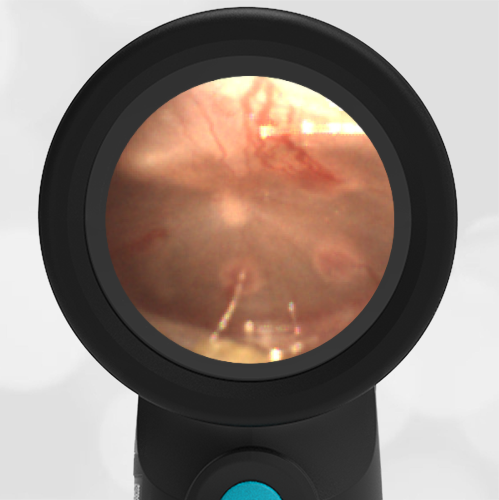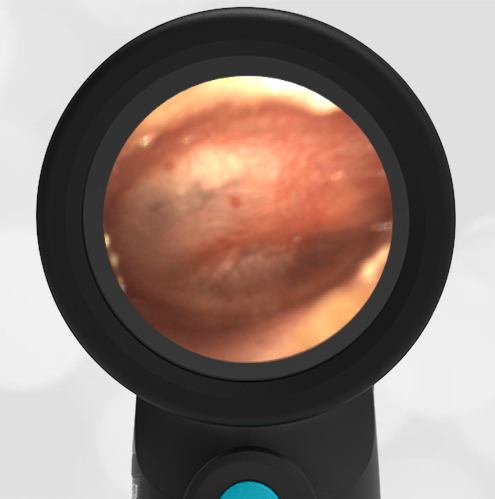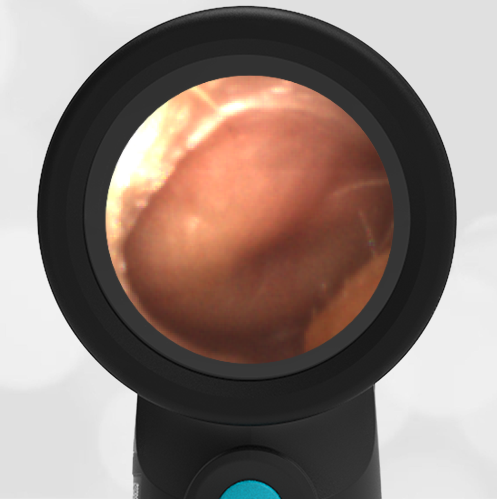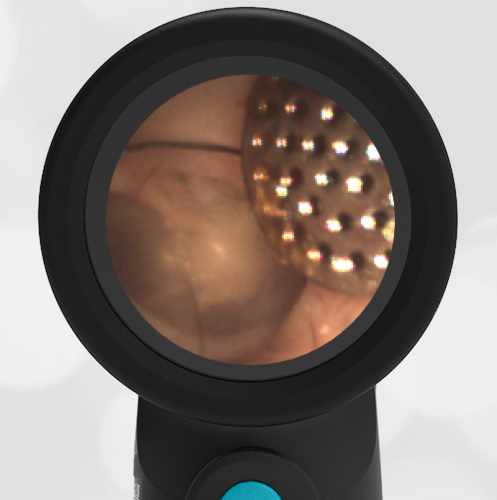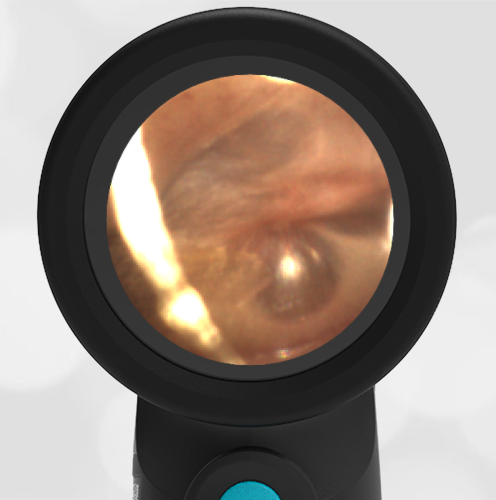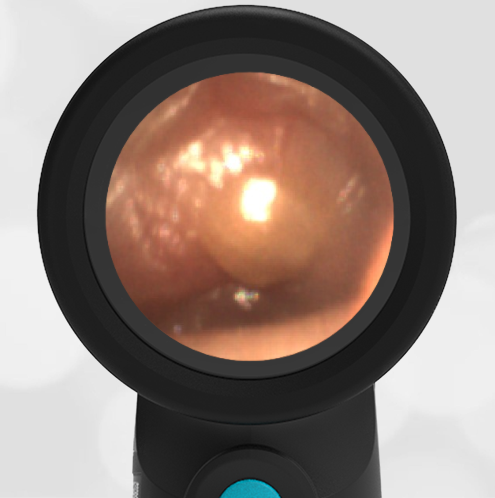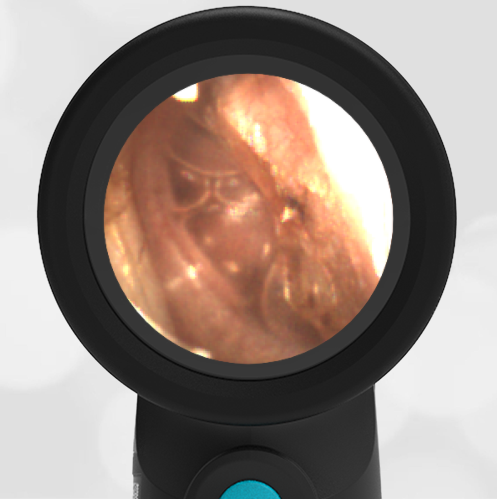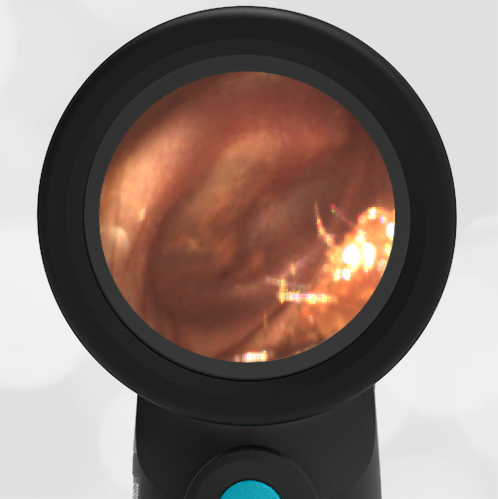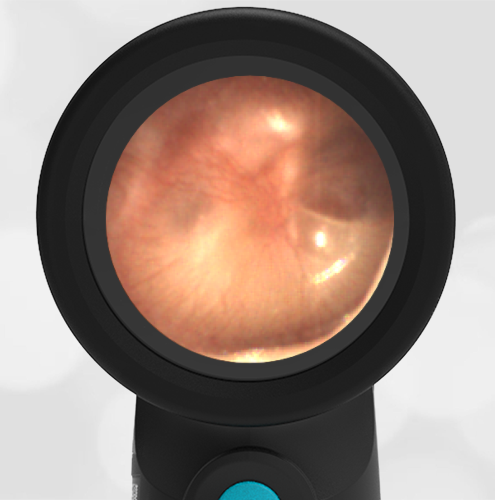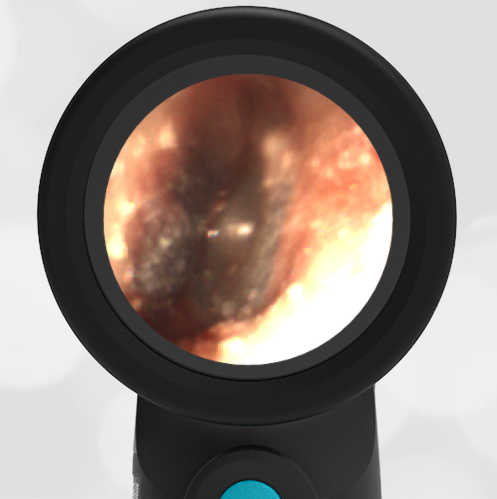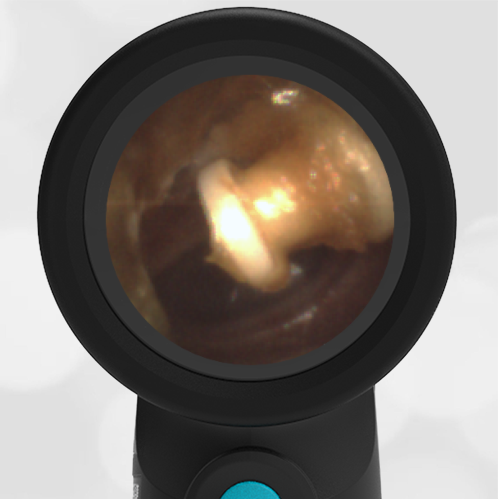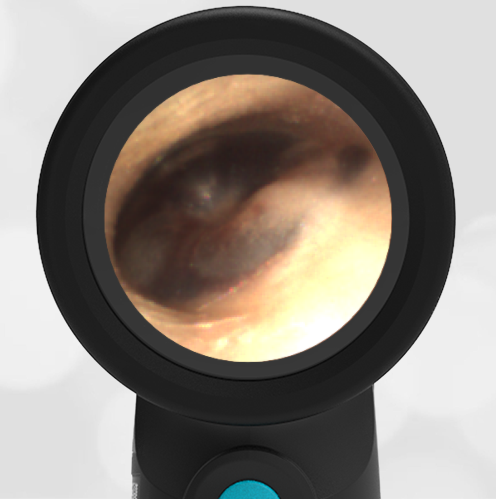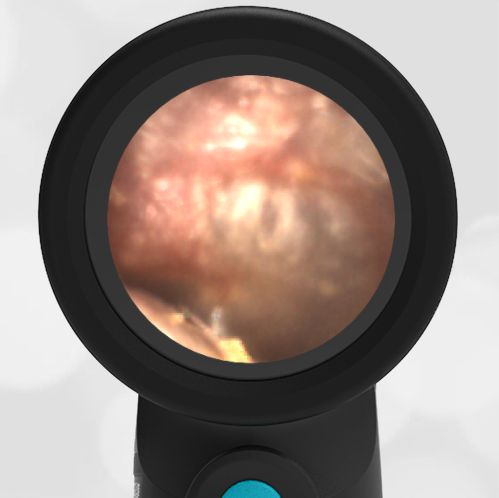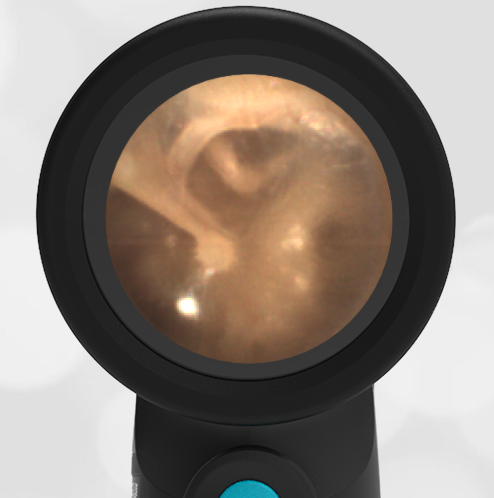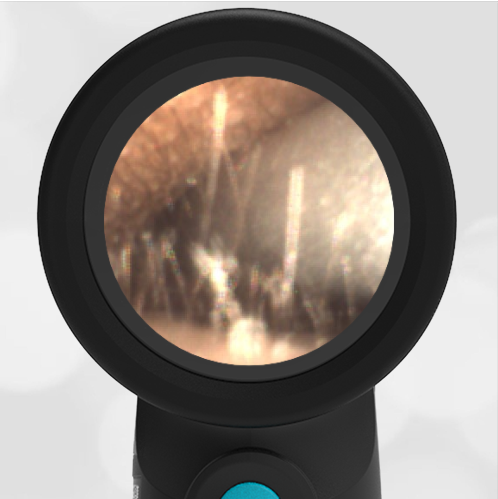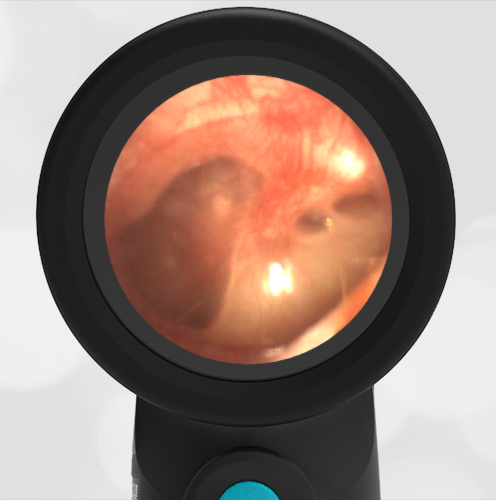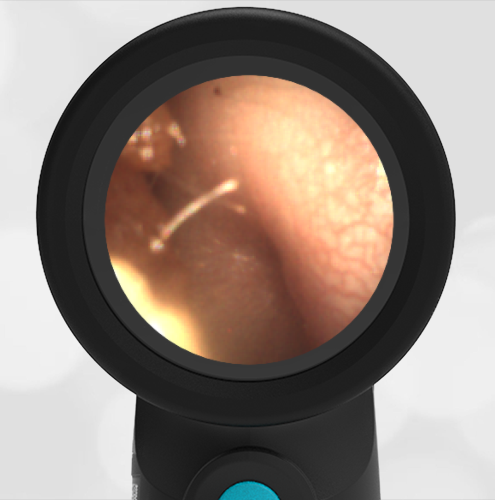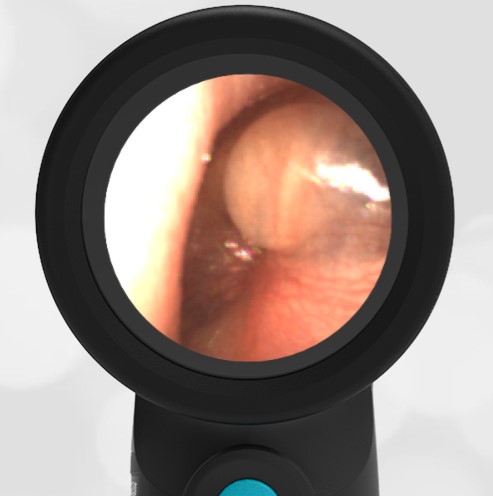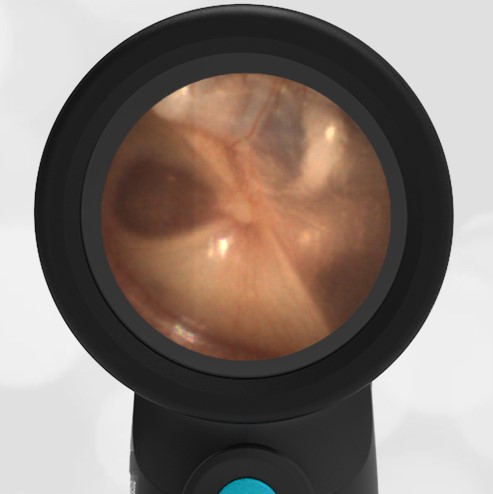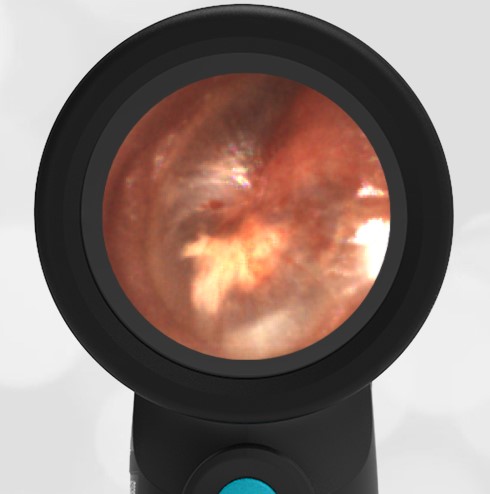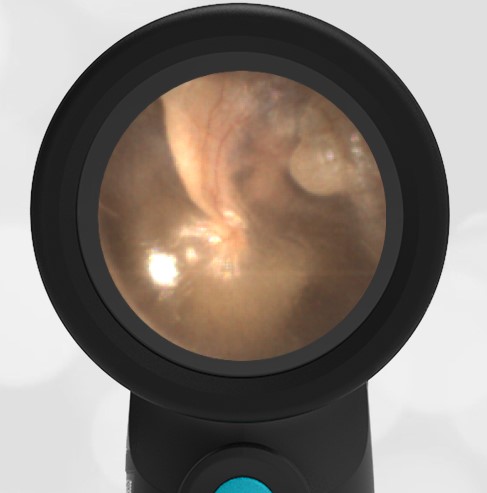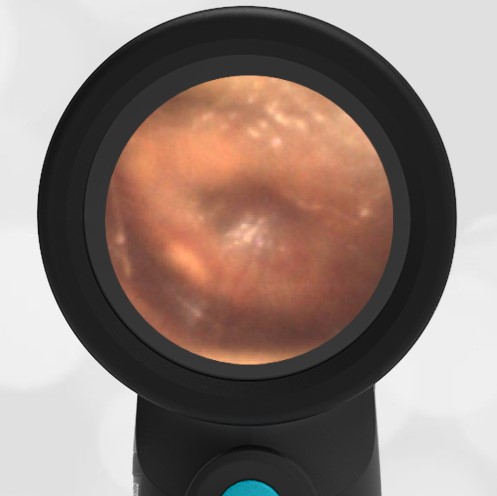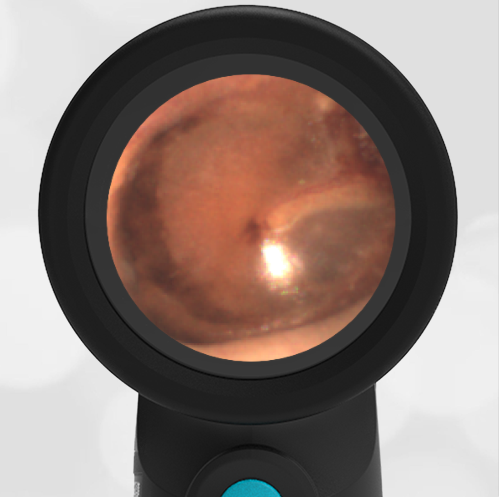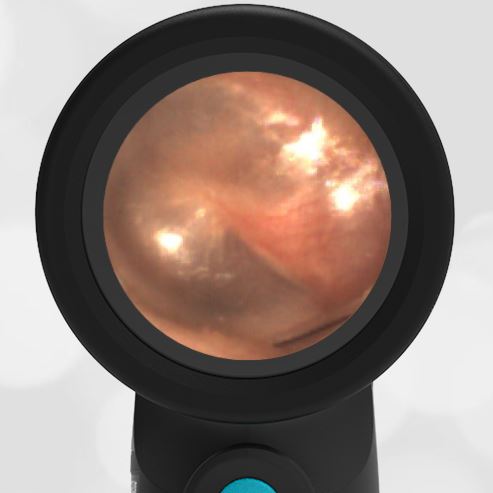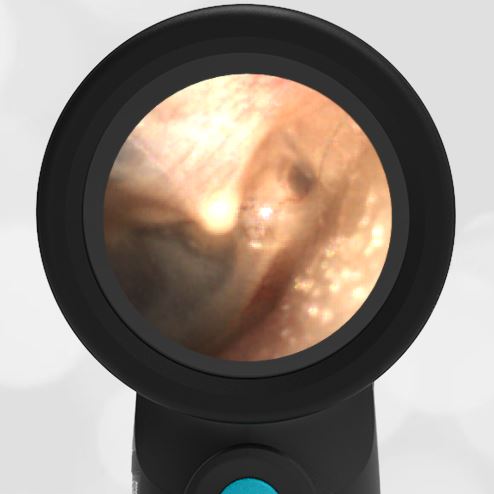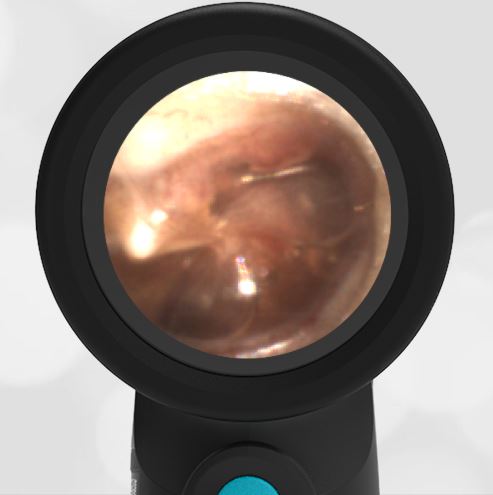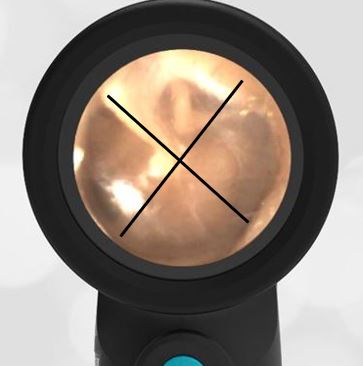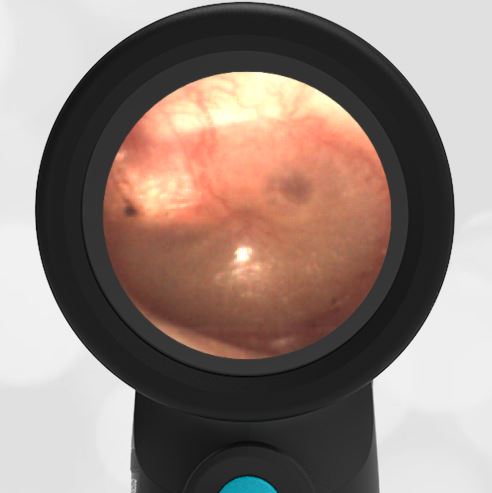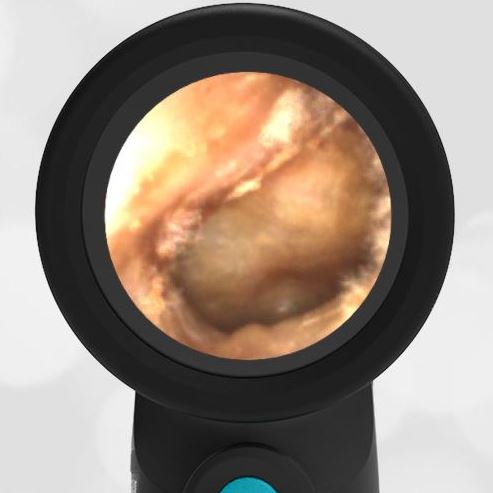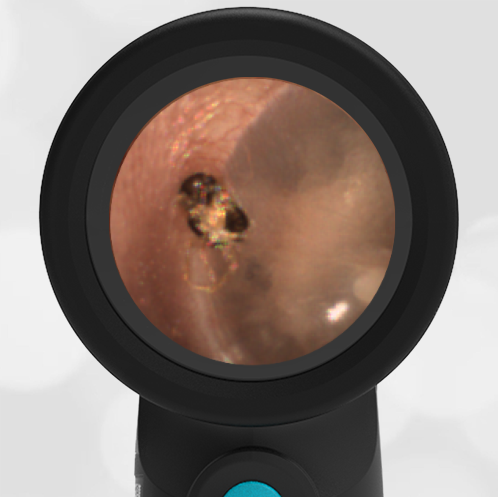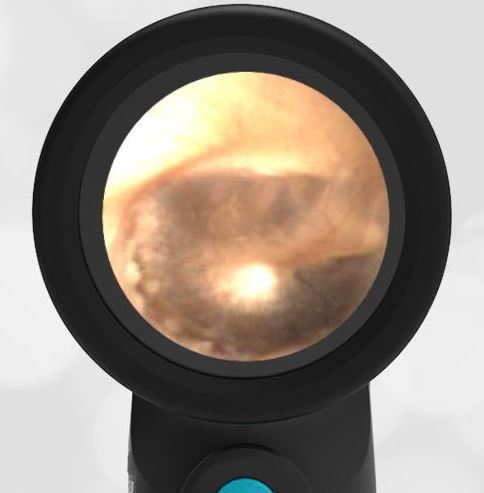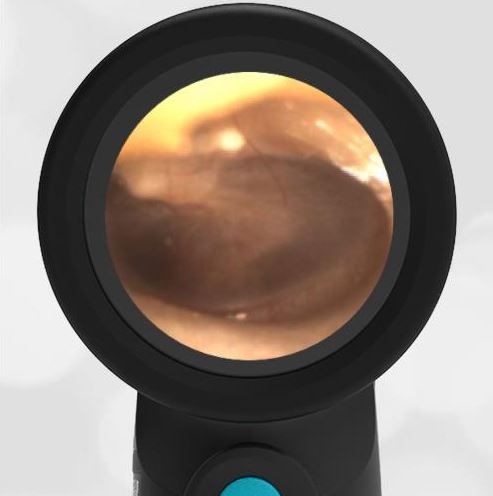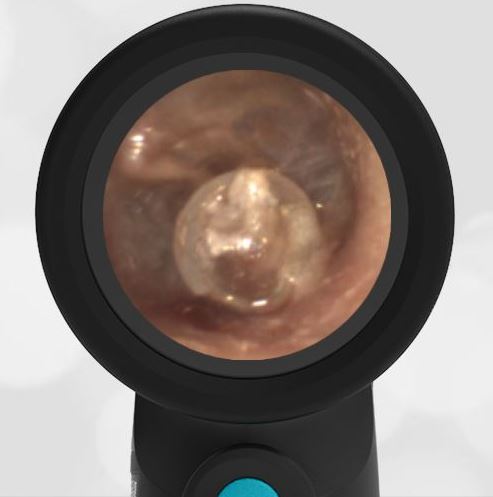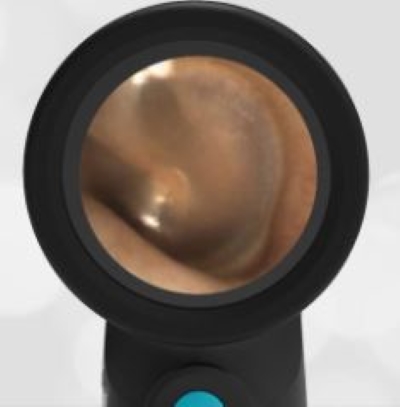
Bullous Myringitis – October 10, 2024
An 8-year-old boy presented to the Pediatric emergency department (ED) late in the evening complaining of ear pain. He had several days of mild upper respiratory symptoms but no fever or significant cough. However, he awoke that evening with severe left ear pain. It was not relieved with ibuprofen, so his mother brought the child to the ED for evaluation. He was afebrile with age-appropriate vital signs. The physical exam was remarkable for an obviously uncomfortable child, holding his left ear. His Wispr digital otoscope exam is pictured below.
Which of the following is an associated etiology of the child’s finding?
- Streptococcus pneumoniae
- Moraxella catarrhalis
- Group A Streptococcus
- Respiratory Syncytial Virus (RSV)
- All the above
Answer: E. All the above

The child’s diagnosis is bullous myringitis which is characterized by painful vesicles or bullae (blisters) on the tympanic membrane (TM). These bullae may be quite large and occasionally hemorrhagic. Common etiologies are viruses, such as RSV and influenza. However, the typical acute otitis media bacterial pathogens are also frequently associated with bullous myringitis. Streptococcus pneumoniae is the most commonly identified bacteria, followed by Moraxella catarrhalis, Group A Streptococcus, and Staphylococcus aureus. Acute otitis media (AOM) is also an infection in the middle ear space. AOM’s diagnostic hallmark is bulging of the TM without the presence of the bullae found with bullous myringitis.
WiscMed thanks Dr. Joseph Stearns of the University of Wisconsin BerbeeWalsh Department of Emergency Medicine for this case.
Here is the complete video exam
Reference:




